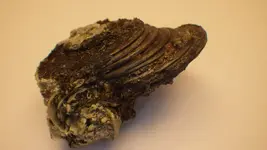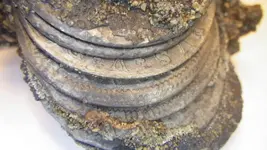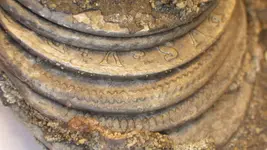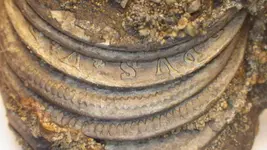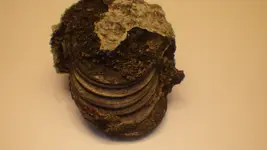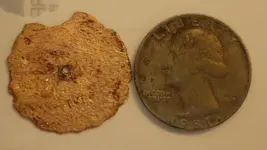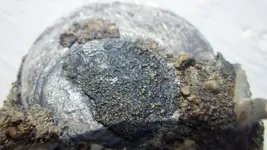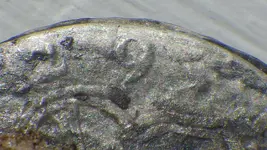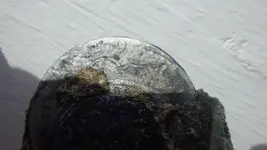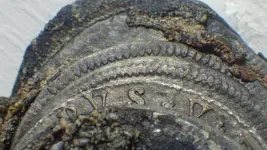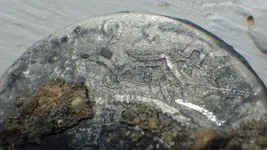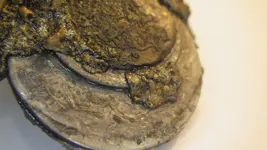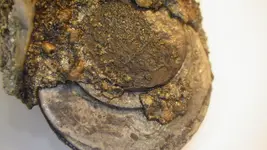Huntsman53 sent me a PM asking for my assistance in identifying the firearms projectiles (cannonballs and musketballs, grapeshot balls).
I've read a few parts of this 700-posts discussion in the past several months, but have not kept up with it recently. I now see that BVI Hunter has posted photos of the "cleaned" balls with APPROXIMATE (not highly-precise) measurements since the last time I looked. Knowing the nationality of the ship is crucial to correctly identifying the balls.
Also, unfortunately, centuries of submergence in saltwater tends (usually, but not absolutely always) to partially change the weight and shape of iron balls, which makes the super-accurate measuring and weighing of the iron cannonballs (needed for correctly identifying them) very difficult if not impossible.
My primary area of IN-DEPTH study has been artillery projectiles used in North America from the mid-1750s to the latter-1800s. I only have "some" familiarity with projectiles from earlier times and other locations. In particular, because BVI Hunter's shipwreck produced Spanish coins, I must mention that I am only partially familiar with Spanish Colonial artillery projectiles, because very-very few of those have been excavated in North America.
That being said, I'll help BVI Hunter as far as my knowledge-base goes.
Forgive me, but I don't have the time to meticulously read through all 700+ posts to find the information I need. So, I'll ask BVI Hunter to provide answers to three basic questions:
1- The lastest coin-date I've seen mentioned was 1729. Have any later dates turned up?
2- Are any of the coins non-Spanish?
3- Have you found anything which tells the ship's nationality with certainty? (The Spanish coins don't do that, because nearly EVERYBODY in the Caribbean used Spanish silver coins.)
Meanwhile, until those questions are answered, here is some basic Artillery info which is relevant to identifying the iron balls.
Prior to approximately the 1830s, the projectiles for all firearms (cannons, muskets, pistols) was a spherical ball or a group of balls -- a cannonball, grapeshot ball, musketball, buckshot. "Bullet-shaped"projectiles did not exist until "about" the early-1800s.
Prior to the mid-1700s, cannons were mostly identified by a name, such as Culverin and Demi-Culverin, etc, etc. Afterward, cannons were instead named with the weight of the Solid-Shot (not hollow explosive) projectile they fired... such as, a 1-pounder cannon and a 6-pounder cannon. Also, usually, the "function" of the cannon was included in the name... such as 3-pounder Gun, a 12-pounder Howitzer, and an 8-inch Mortar.
We scholars of Historical Artillery identify ball-shaped projectiles by their precisely-measured diameter. If an excavated ball's ORIGINAL diameter has been reduced by corrosion, correct identification is extremely difficult and may be impossible.
Some examples of Colonial Era cannons and ball-sizes:
A 1-pounder caliber cannon's bore-diameter was approximately 2.0-inches and its cannonball's diameter was 1.90 to 1.95-inches.
A 4-pounder caliber cannon's bore-diameter was approximately 3.25-inches and its cannonball's diameter was about 3.12 to 3.15-inches.
A 9-pounder caliber cannon's bore-diameter was 4.2-inches and its cannonball's diameter was 4.0 to 4.1-inches.
The problem with identiying cannonballs from a Colonial Era unknown-nationality shipwreck is that the different European nations tended to have different cannon-caliber systems AND different weight-systems. For example, the French "pound" weight was around 10% heavier than the British "pound" weight (16 ounces Avoirdupois). So, a French 8-pounder caliber cannonball weighed almost exactly the same as British 9-pounder caliber cannonball.
Also, in the Colonial Era, the Spanish artillery calibers were mostly different from the British, French, Danish, and Netherlands (Dutch) calibers. So, BVI Hunter's 4-inch iron ball could be either a French 8-pounder, a British 9-pounder, or a Spanish, Danish, or Dutch cannonball. For example, Denmark and the Netherlands owned several Caribbean islands in the Colonial Era, so of course their Navy ships were present there. (The "Netherlands Antilles" still exist today, as self-governed Dutch dependencies.)
Another example:
In the Colonial era, some countries had a 2-Pounder caliber cannon, and other countries didn't. A 2-Pounder cannon's bore-diameter was about 2.6-inches, and its cannonball-diameter was about 2.40 to 2.5-inches.
Iron artillery balls from the 1700s which are smaller than a 1-pounder cannon's 1.9-inches cannonball are most probably balls from Quilted Grapeshot ammunition... which was a group of iron balls or lead balls contained in a canvas bag with a disc of wood or iron at the bottom.
Huntsman53 is right, the lead balls from your shipwreck which are larger than about .75-inch are not musketballs or pistolballs. They are Quilted Grapeshot balls, which can be either iron or lead.
About the .75-inch-or-less lead balls: If they are PERFECTLY SPHERICAL, they are most probably musketballs or pistolballs. Note, I emphasized "perfectly spherical" because musketballs and pistolballs HAD to be perfect spheres (not out-of-round/lumpy) to prevent the ball from jamming in the gunbarrel during loading or firing. Also note, Quilted Grapeshot balls did not have to be perfectly spherical.
Since at the present time I do not know the ship's nationality, and the measurements you provided in your list of balls from the shipwreck are only "approximate," all I can do at the moment is give you answers based on "approximate" matchup with the European cannonball sizes I know of.
approximate 4" ball = British 9-Pounder or French 8-Pounder cannonball(or a Spanish equivalent of those cannons)
approximate 3" ball = nearest match is a 4-Pounder cannonball
approximate 2.5" ball = 2-Pounder cannonball OR large-caliber Quilted Grapeshot ball
approximate 2" ball = 1-Pounder cannonball OR large-caliber Quilted Grapeshot ball
balls smaller than 1.9-inches but larger than 0.8-inch = small-caliber Quilted Grapeshot balls
balls smaller than 0.8-inch = most likely musketballs and pistolballs but COULD be small-caliber Quilted Grapeshot balls
At this point, I do not think this is the wreck of a "major" warship, because SO FAR no cannonballs from it are larger than 4"-diameter. Major warships of that era had much larger calibers of cannons... such as 24-pounder (5.82"-caliber), 32-Pounder (6.4"-caliber), and even some 42-Pounder (7"-caliber) cannons. You're not going to be able to put much of a hole in a Man-Of-War's hull with a 9-pound cannonball.
A closing sidenote:
The problem with consulting Museum Archeologists (and even Colonial Era shipwreck archeologists) is that almost none of them are artillery-projectile SPECIALISTS. I respect them enormously for being excellent at correctly identifying small pieces of crockery and smoking-pipes and earwax-removal tools. But if you hand them an iron ball, they rarely have the "deep knowledge" of Artillery to be able to CORRECTLY identify the ball. At best, they tend to make partially-educated guesses about projectile balls. You're going to need a specialist in Colonial Era artillery projectiles (and musketballs/pistolballs) to super-precisely measure your shipwreck balls and correctly ID them. Hopefully there is at least one such person available to you in the BVI.


